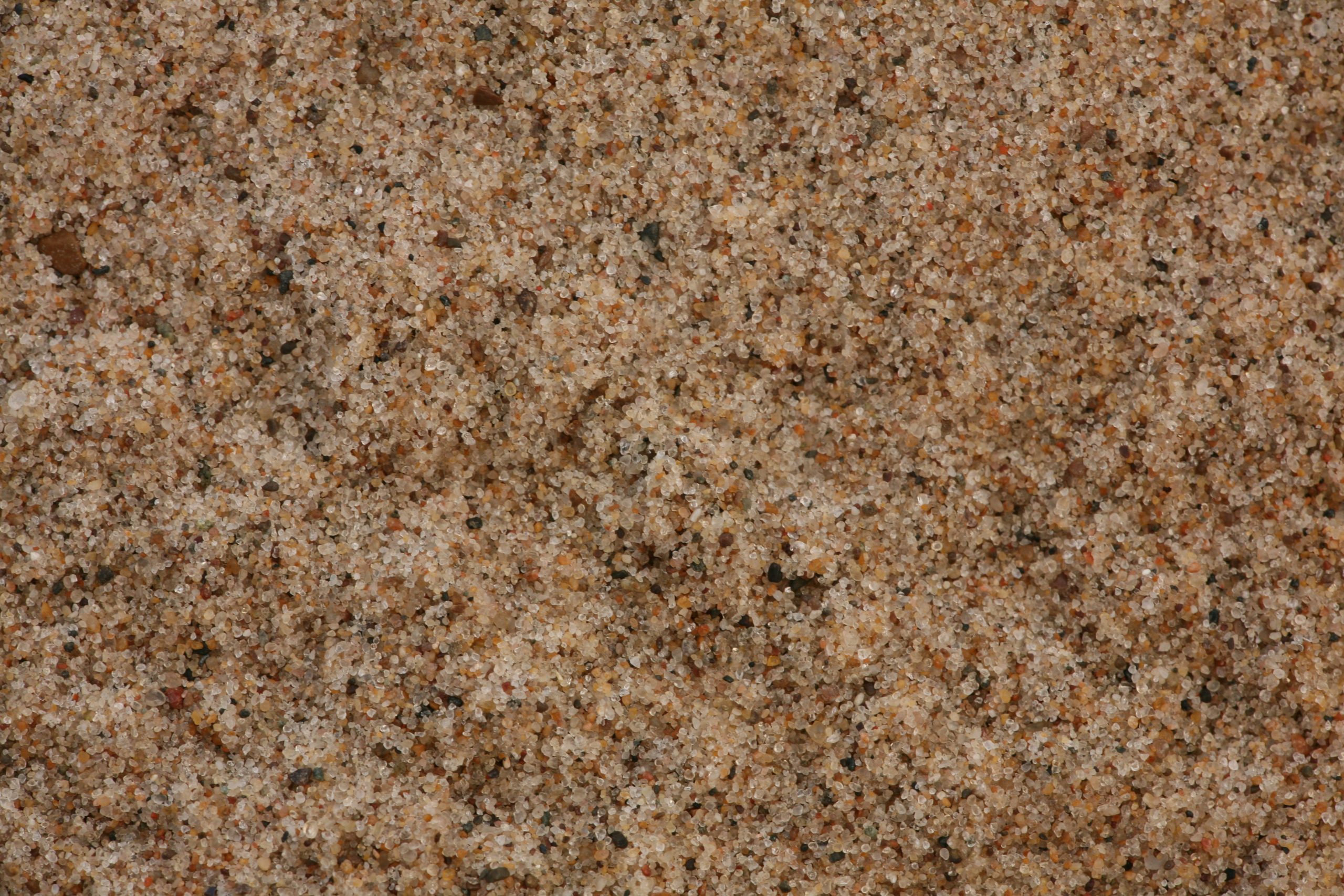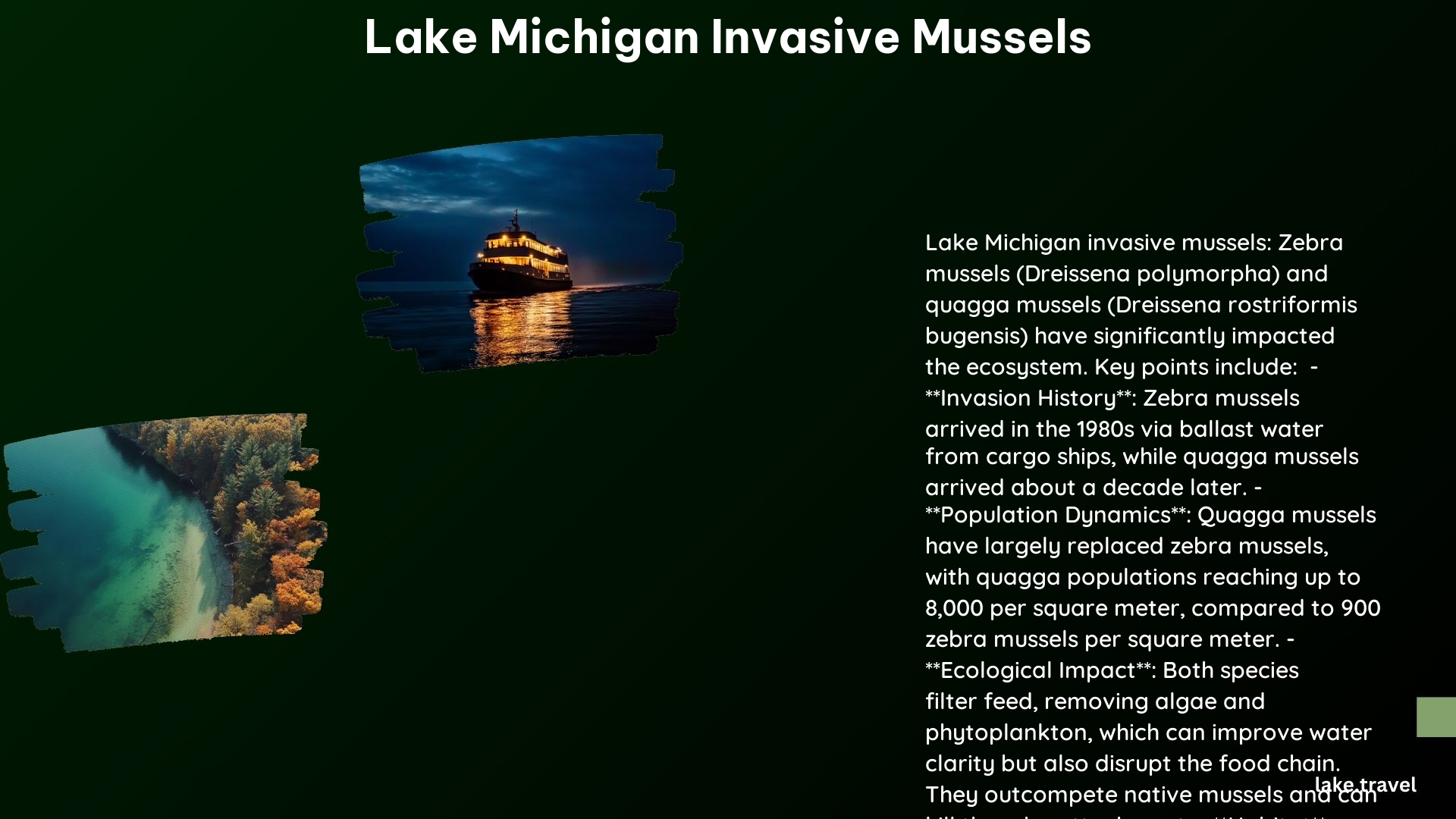Lake Michigan, one of the Great Lakes, has been significantly impacted by the invasion of non-native mussel species, particularly quagga and zebra mussels. These mussels have had both positive and negative effects on the ecosystem and human activities.
Origin and Spread of Lake Michigan Invasive Mussels

- Invasion History: Zebra mussels were first introduced to Lake Michigan in the 1980s through contaminated ballast water from cargo ships. Quagga mussels arrived about a decade later and have since become the dominant invasive mussel species.
- Spread: Both zebra and quagga mussels have spread to numerous inland lakes and rivers, with quagga mussels found at depths of up to 540 feet in Lake Michigan.
Ecological Impact of Lake Michigan Invasive Mussels

- Filter Feeding: Both zebra and quagga mussels are filter feeders, which has improved water clarity by removing particulate matter. However, this has also led to the decline of native mussel populations and altered the food chain.
- Native Mussel Decline: Native mussel populations have drastically decreased due to the invasive mussels, with some native species being wiped out.
- Ecosystem Disruption: The invasive mussels have disrupted the ecosystem by outcompeting native species for food and habitat, and altering the species composition of aquatic plant communities.
Economic Impact of Lake Michigan Invasive Mussels
- Maintenance Costs: The mussels clog water intake structures, increasing maintenance costs for water treatment and power plants.
- Recreational Impacts: Mussels accumulate on docks, buoys, and boat hulls, affecting recreational activities and causing damage to boats.
- Economic Burden: The invasive mussel problem creates a significant financial burden due to the costs associated with maintenance, removal, and ecosystem restoration.
Management Efforts for Lake Michigan Invasive Mussels
- Experimental Treatments: Projects like the Invasive Mussel Collaborative have successfully removed quagga mussels using molluscicides, leading to a significant reduction in mussel density and nuisance algae growth.
- Monitoring and Research: Ongoing research and monitoring efforts are crucial in understanding the impacts of invasive mussels and developing effective control methods.
Key Statistics on Lake Michigan Invasive Mussels
| Statistic | Value |
|---|---|
| Quagga Mussel Density | Up to 8,000 per square meter in Lake Michigan |
| Native Mussel Decline | Decreased from hundreds of thousands to dozens in some areas |
| Economic Costs | Significant, with costs associated with maintenance, removal, and ecosystem restoration |
The invasion of quagga and zebra mussels in Lake Michigan has had a significant impact on the ecosystem and human activities. While the mussels have improved water clarity, they have also caused the decline of native mussel populations and disrupted the overall ecosystem. The economic burden of the invasive mussels is substantial, with costs associated with maintenance, removal, and ecosystem restoration. Ongoing research and management efforts are crucial in addressing this persistent problem.
References:
– Lester, K. (2023, September 22). Great Lakes owe clear waters to invasive species. Spartan Newsroom. https://news.jrn.msu.edu/2023/09/great-lakes-owe-clear-waters-to-invasive-species/
– Marsden, J. E. (2021, February 2). 30 Years Later: Mussel invasion legacy reaches far beyond Great Lakes. Great Lakes Now. https://www.greatlakesnow.org/2021/02/invasive-mussels-legacy-beyond-great-lakes/
– Center for Invasive Species Research. (n.d.). Quagga & Zebra Mussels. https://cisr.ucr.edu/invasive-species/quagga-zebra-mussels
– Great Lakes Commission. (2020, December 8). Project successfully removes invasive quagga mussels near Sleeping Bear Dunes in Lake Michigan. https://www.glc.org/news/ghr-120820
